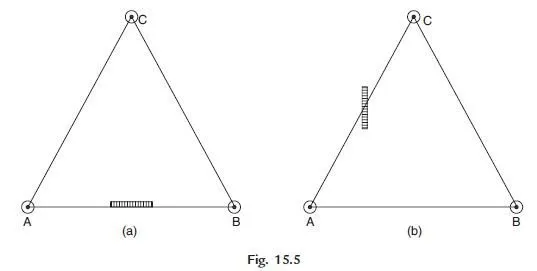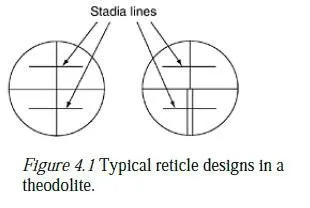The adjustments to be made at every setting of the instrument are called temporary adjustments. The following three adjustments are required for the instrument whenever set over a new point before taking a reading:
(i) Setting (ii) Levelling and
(iii) Focussing.
Setting
Tripod stand is set on the ground firmly so that its top is at a convenient height. Then the level is fixed on its top. By turning tripod legs radially or circumferentially, the instrument is approximately levelled.
Some instruments are provided with a less sensitive circular bubble on tribrach for this purpose.
Levelling The procedure of accurate levelling with three levelling screw is as given below:
(i) Loosen the clamp and turn the telescope until the bubble axis is parallel to the line joining any two screws [Ref. Fig. 15.5 (a)].
(ii) Turn the two screws inward or outward equally and simultaneously till bubble is centred.
(iii) Turn the telescope by 90° so that it lies over the third screw [Fig. 15.4 (b)] and level the instrument by operating the third screw.
(iv) Turn back the telescope to its original position [Fig. 15.5 (a)] and check the bubble. Repeat steps (ii) to (iv) till bubble is centred for both positions of the telescope.
(v) Rotate the instrument by 180°. Check the levelling.
Focussing
Focussing is necessary to eliminate parallax while taking reading on the staff. The following two steps
are required in focussing:
(i) Focussing the eyepiece: For this, hold a sheet of white paper in front of telescope and rotate eyepiece in or out till the cross hairs are seen sharp and distinct.
(ii) Focussing the objective: For this telescope is directed towards the staff and the focussing screw is turned till the reading appears clear and sharp.





I satisfied above points…i like it
Super ans for adjustment of level i totally inspire for ths ans.